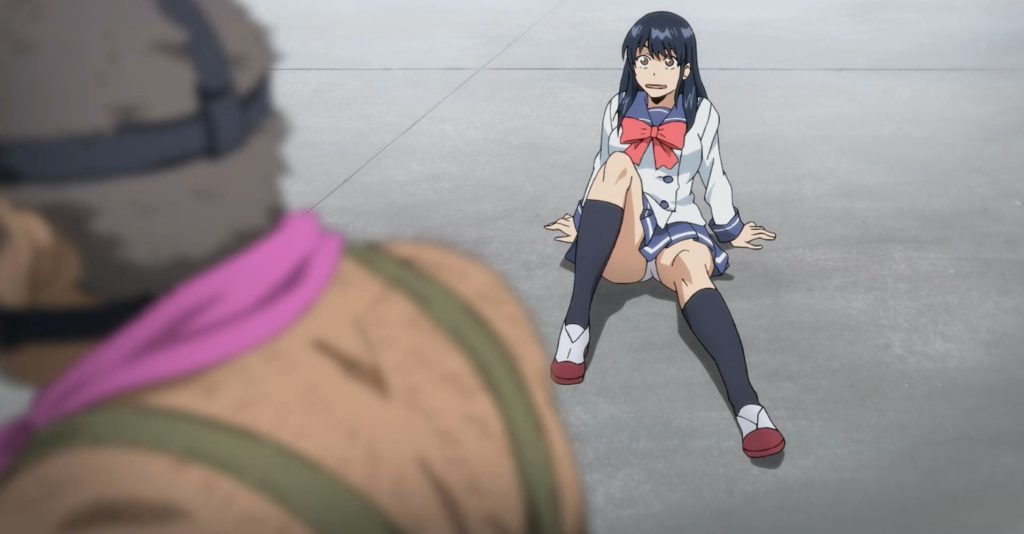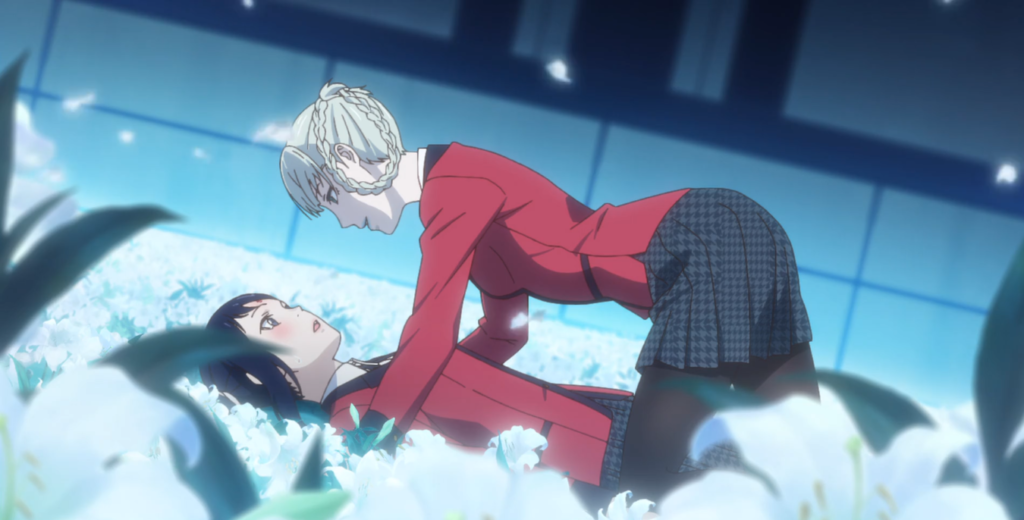As an avid anime fan myself, I can’t help but notice the hypersexualization and child-like manners of female characters in a substantial number of anime. The culture of anime creates an outlet for pedophiles and rape culture, not only because of the existence of these traits, but because of the normalization of unrealistic attractions. Of course, there are some shows such as Highschool DxD, but others like Attack On Titan—whose focus is on the plot and action—still feature these child-like mannerisms and unnecessary sexualization of female characters. This goes to show that, like other patriarchal cultures around the world, the Japanese anime culture caters to the male gaze, and its effects are extremely harmful to women when translated to the real world.
Due to the normalization of this sexualization and pedophilic tendencies, it may be hard for some to believe that what they’re watching is harmful, so here are some examples of animes that feature this behaviour.
- High Rise Invasion: In the beginning of the show, Yuri Honjo falls over in an action shot. Her underwear is completely exposed and it has nothing to do with the scene. Another character, Kuon Shinzaki, speaks in an incredibly high pitched voice and exhibits child-like, sexualized mannerisms such as strange, unnecessary moaning and squeaks.
- Kakegurui: The sexual actions depicted in this anime are actually a little different, because it’s intentional, but no doubt still contributes to the male gaze. In one scene, Yumeko Jabami, seems to enjoy getting ganged up on by some male students who have the intention of assaulting her. This romanticizes nonconsensual behaviour.
- 7 Deadly Sins: Within the first episode, the only female character gets sexually assaulted twice and the plot does not acknowledge this at all. Ban also dates a fairy called Elaine who looks and speaks like an actual child.
- Fruits Basket: Tohru Honda, the main female protagonist, is extremely infantilized – high pitched voice, tiny body, exhibits random squeaks and moans and an overall very child-like attitude. Personally, I had to stop watching the show because of this.
These are just a few examples of the sexualization in anime, but there are so much more and it’s almost guaranteed to be in every show you watch with a female character in it.
Given these examples, we can already see that anime and these fanservice characters are so obviously for males and therefore perpetuate the male gaze. Shonen anime in particular, which caters directly to teenage boys, are the ones that sexualize girls the most. Due to their mainstream appeal, this style of anime creates the impression that most if not all anime is like this. It also highlights how dominant the wants for men are: there is truly nothing like this in male characters for the female gaze. They are only for men.
The additions are just so unnecessary: the high pitched voices, submissive nature, big, innocent eyes, short skirts, moans and squeaks in ‘action’ shots, and how they look and act like children. Sure, if the intention of the anime is to be sexual, then it makes more sense (but is not justifiable), but a lot of these shows are famous for the plot, yet these little things are still slipped in to make it more appealing to men. Furthermore, the way that these female characters speak Japanese is so unlike how real life women actually speak the language. This distorts foreigners’ image of Japan, especially those who have never been there. Their impression of Japanese women is now what they see in anime, and not only does this create a disgusting expectation for them to speak like that, but also creates desires for women who look and act like children. This expectation also extends to Asian women of similar skin tone.
Perhaps the main issue with this is the fact that it’s seen as ‘justifiable’ because of the plot or technical facts in the anime, and this is where the outlet for pedophilia comes in. Anime fans often try to justify their attraction to a certain child-like character when called out for their behaviour; they try to normalize and disguise it in the fact that she’s a certain age, etc. A simple example of this is loli: female characters that are technically older, but look like children. Borderline pedophiles use this to legitimise their attraction to them. Since they’re older, it’s ok to find them appealing, right? No, not when they look like children. This type of attitude only tells men that it’s acceptable to find these types of girls desirable, and it clearly manifests itself in real life dating culture.
Another example of this ‘justification’ is in 7 Deadly Sins: people excuse Ban and Elaine’s obviously pedophilic relationship because of technical facts from the anime. For context, the fantasy show is about the seven sins. Ban represents greed, and Elaine is an elite Fairy warrior. Ban at least looks like a grown man, but Elaine’s body represents that of a human child, with a very petite frame, large eyes and a soft, squeaky voice. Fans have tried to justify their attraction to Elaine because of her age―she is at least 1,000 years old, as if that’s not weird either―and the fact that when she transforms into a fairy, her features become more ‘mature’. But if you look at images of her in the ‘mature’ form, she looks relatively similar. She still has that petite form: their fairy design is completely invalid. These ‘technicalities’ don’t matter at all.
At this point, the trend is obvious. Submissive women are more favorable, ‘coincidentally’ looking like children, whereas female characters who don’t look like children are ‘too dominant’ and therefore unattractive, or less appealing. There’s nothing inherently wrong with that, but it leaves the question of if you don’t find these women, who actually look and act like grown women, attractive, then who?
Sexual assault is also a common trope in anime; they’re unfortunately very often used as the punch line to a joke, which forms a gateway for rape culture. As said in the previous example, Yumeko Jabami in Kakegurui is assaulted, but they think nothing of it afterwards and the way the scene is shown romanticizes it. How do I know this wasn’t treated as a big deal? The fans themselves made edits of her being assaulted afterwards. Again, 7 Deadly Sins makes constant jokes about sexual harassment; they make it seem as though it’s something fun to talk about, and it’s the worst way to add fanservice to a show. Assault is serious and should never be used as the butt of a joke. Although these shows themselves are obviously harmful to the current narrative of women’s rights, they have an even worse impression on viewers who don’t see the problem with this. You may not be a rapist, or a sexual assaulter, but being surrounded by and internalizing this content unconsciously affects your thinking and behaviour, because now you see it as normal.

https://cradleviewstore.com/4856-2/
Lastly, let’s talk about the Asian fetishes and stereotypes that arise from these female anime tropes. The stereotypes of talking in a high pitched voice, types of clothing and body standards are all translated into cosplay, social media and real life. For example, schoolgirl outfits are really common in anime, and this has turned into a whole fetish. Even if you don’t know what it looks like, the word ‘schoolgirl’ should be a giant red flag. The term is derived from a Japanese magazine dating back to the 1800s called The Yokohama Daily Newspaper which published a series called The Tales of Degenerate Schoolgirls. It portrayed the girls as perverse and overly sexual, laying the foundation for the modern schoolgirl to be fetishized. Examples of this in anime can be seen in Sailor Moon, Ouran High School Host Club and Otaku; it’s also been translated into Western films, such as the infamous Gogo Yubari in Kill Bill Vol. 1.
The underage prostitution of the schoolgirl trope is also exhibited in compensated dating, also known as enjokosai. In the 90s, Japanese schoolgirls would go on dates with older men and engage in sexual activity in exchange for material goods. This is part of a larger subculture called Kogal culture, originally named kōkōsei gyaru. Translating to ‘high school gal’, it consisted of young girls wearing sailor suits in a schoolgirl style, an image that often catered to older men. Kogal culture influenced the fashion world greatly, setting trends such as the loose sock trend, which became increasingly popular in the 90s. Since public school banned them, girls would change into loose socks in public, leading to them being fetishized by older Japanese men. It was also often associated with compensated dating and the schoolgirl aesthetic, leading to it becoming more and more sexualized. A more modern version of this is thigh high socks. Having made an appearance on female characters in anime, the unnecessary sexualization of these literal pieces of cloth have been reinforced yet again.
The misogyny against and oversexualization of young, Japanese women in anime is tainting men’s view of dating culture and what type of women they should be attracted to. Consequently, this harms Asian women in so many ways: normalization of rape, pressure to look a certain way, expectations to act like a child in order to seem appealing and so much more. Representation of any minority group in media is extremely important, and male anime creators are often putting their wants to satisfy themselves before the safety of other women. It’s sad that, in order for an anime to have mainstream appeal in this world, it must sexualize and infantilize its female characters to cater to the male gaze.
Sometimes, socks are just socks.
